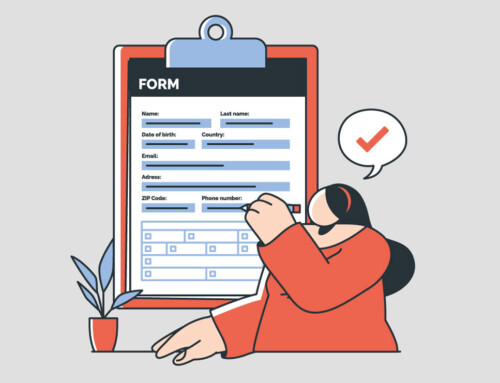Contents
Supervised visitation is a crucial aspect of family law that aims to ensure the safety and well-being of children while allowing them to maintain relationships with non-custodial parents. This arrangement typically involves a neutral third party overseeing visits between a child and a parent, providing a secure environment for interaction. Understanding how supervised visitation works and its impact on families can help parents navigate this often challenging process, ensuring that the needs of the children remain the top priority. In this article, we will explore the concept of supervised visitation, its implementation, and the benefits it offers to families in various situations.
How Does Supervised Visitation Work?
Supervised visitation works by providing a structured and monitored environment where a non-custodial parent can spend time with their child. The process generally involves the following steps:
Court Order: Supervised visitation is usually mandated by a court order, often in cases where there are concerns about the child’s safety or well-being. The court specifies the terms and conditions of the visitation.
Selection of a Supervisor: A neutral third party, known as the supervisor, is appointed to oversee the visits. This person can be a professional supervisor, a social worker, or a trusted family member, depending on the court’s decision and the family’s circumstances.
Setting and Schedule: Visits typically take place in a designated location, such as a supervised visitation center, a park, or a family member’s home. The schedule is often predetermined by the court or agreed upon by both parents, ensuring consistency and regularity.
Supervised Interaction: During the visit, the supervisor is present at all times to monitor the interaction between the parent and child. Their role is to ensure the child’s safety, observe the dynamics, and intervene if necessary.
Reporting: The supervisor may be required to document the visits, noting any incidents, behaviors, or concerns. These reports can be submitted to the court to help inform future decisions regarding visitation arrangements.
Compliance and Review: Both parents must comply with the court-ordered visitation terms. Periodically, the court may review the arrangement to assess its effectiveness and determine if modifications are needed, such as transitioning to unsupervised visits.
By following these steps, supervised visitation aims to create a safe and positive environment for children to maintain relationships with their non-custodial parents while addressing any underlying issues that necessitated supervision.
How Long Do Supervised Visits Last?
The duration of supervised visits can vary widely depending on the specific circumstances of each case and the court’s directives. Here are some common factors that influence the length of supervised visits:
- Court Order: The court typically sets the duration of each supervised visit based on the child’s best interests and the specifics of the case. Visits can range from one hour to several hours.
- Child’s Age and Needs: Younger children may have shorter visits to prevent them from becoming overwhelmed, while older children may have longer visits to facilitate meaningful interaction with the non-custodial parent.
- Frequency of Visits: The court may also determine how often visits occur, which can impact the duration of each visit. For example, shorter but more frequent visits might be arranged to ensure consistent contact.
- Progress and Behavior: The length of supervised visits can change over time based on the behavior of the non-custodial parent and the overall progress of the visitation arrangement. Positive interactions and compliance with court orders may lead to longer visits or a transition to unsupervised visits.
- Visitation Setting: The setting of the visit (e.g., a visitation center, a family member’s home, or a public place) can also influence the duration. Some settings may have specific time limits or availability constraints.
- Supervisor’s Schedule: The availability and schedule of the supervisor can affect the length of visits, as they need to be present for the entire duration to ensure the child’s safety.
Ultimately, the goal is to create a visitation schedule that supports the child’s well-being and allows for a healthy relationship with the non-custodial parent. The specifics of each case will dictate the exact duration and frequency of supervised visits.
Who Supervises Supervised Visitation?
Supervised visitation is overseen by a neutral third party to ensure the safety and well-being of the child during visits with the non-custodial parent. The supervisor can be one of several types of individuals, depending on the specifics of the case and the court’s directives. Here are some common types of supervisors:
- Professional Supervisors: These are trained individuals who specialize in overseeing supervised visitations. They are often employed by agencies or organizations that provide supervised visitation services. Professional supervisors are skilled in managing various situations and ensuring the child’s safety during visits.
- Social Workers: In some cases, social workers are appointed to supervise visitations. They have expertise in child welfare and are equipped to handle complex family dynamics. Social workers can also provide detailed reports to the court about the interactions during the visits.
- Therapists or Counselors: Sometimes, therapists or counselors are chosen to supervise visits, especially if there are underlying psychological issues that need to be addressed. They can provide therapeutic support during the visits and offer insights into the parent-child relationship.
- Family Members or Friends: Trusted family members or friends may be appointed as supervisors if both parties agree and the court deems it appropriate. These individuals must be neutral and able to enforce the visitation rules without bias.
- Supervised Visitation Centers: These centers provide a controlled environment for supervised visits. They employ trained staff to monitor the visits and ensure a safe, neutral setting. The centers often have specific protocols and security measures in place.
- Court-Appointed Guardians or Custodians: In some cases, the court may appoint a guardian ad litem or a custodian to supervise the visits. These individuals are responsible for representing the best interests of the child and ensuring compliance with the court’s orders.
The choice of supervisor depends on the specific needs of the child and the circumstances of the case. The court aims to select a supervisor who can effectively ensure the child’s safety while facilitating a positive and supportive environment for the parent-child relationship.
How to get Supervised Visitation Canceled?
Canceling supervised visitation typically involves a legal process and varies depending on the jurisdiction and specific circumstances of the case. The court’s primary concern is the best interests of the child, so any changes to visitation will focus on their well-being. Additionally, the process can take time, and demonstrating sustained improvement is often necessary. Patience and persistence are key in navigating the legal system and successfully having supervised visitation canceled. Here are some general steps to consider:
- Understand the Reasons for Supervised Visitation
Supervised visitation is usually ordered by a court to ensure the safety and well-being of the child. Common reasons include:
- Concerns about the child’s safety with the parent
- History of abuse or neglect
- Substance abuse issues
- Mental health concerns
- Lack of established relationship with the child
- Demonstrate Improvement or Change in Circumstances
To have supervised visitation canceled, you must show that the conditions that led to the supervision have improved. This can involve:
- Completing parenting classes or therapy
- Passing drug or alcohol tests
- Consistent positive behavior during supervised visits
- Stable housing and employment
- Compliance with court orders and treatment plans
- Collect Supporting Evidence
Gather evidence to support your case, such as:
- Testimonies from supervisors of the visits
- Reports from therapists or counselors
- Clean drug or alcohol test results
- Documentation of completed programs (e.g., parenting classes)Top of FormBottom of Form
When Can Visitation Be Denied to the Non-Custodial Parent?
Visitation rights for a non-custodial parent can be denied or restricted in certain circumstances, typically when it is determined that visitation would not be in the best interest of the child. The specific reasons for denying visitation can vary by jurisdiction, but common factors include:
- Abuse or Neglect
- Substance Abuse
- Domestic Violence
- Mental Illness
- Criminal Activity
- Failure to Comply with Court Orders
- Parental Alienation
- Child’s Wishes
- Incarceration
Courts generally prefer to maintain a relationship between the child and both parents and will often look for ways to facilitate safe visitation, such as supervised visits or therapeutic visitation arrangements. However, the child’s safety and best interests are the primary considerations in any decision regarding visitation.
Supervised Visit Rules and Guidelines
Visits must occur in the presence of an approved supervisor, who can be a professional supervisor, a family member, or a neutral third party approved by the court. These visits often take place in designated locations such as supervised visitation centers, the custodial parent’s home, or another neutral, safe environment. They are scheduled for specific times and dates, which must be strictly adhered to, with any changes or cancellations typically requiring prior approval from the court or supervising agency.
The duration of supervised visits is usually specified in the court order, ranging from a few hours to an entire day, depending on the circumstances and the child’s needs. Parents must follow specific behavioral guidelines during visits, including avoiding inappropriate topics, refraining from drug or alcohol use, and maintaining proper conduct throughout the visit. The non-custodial parent is prohibited from having any unsupervised contact with the child outside of the designated supervised visits.
Supervisors are often required to document the visit, noting any concerns or incidents, and report back to the court or relevant agency. There may be restrictions on what can be discussed during visits, such as avoiding topics related to court cases, parental conflicts, or making negative comments about the other parent. The child’s comfort and emotional well-being are prioritized, and visits should be terminated if the child becomes distressed or if the supervisor deems it necessary. Both parents must comply with all terms and conditions set forth in the court order regarding supervised visitation.
What Is Supervised Custody?
Supervised custody refers to a court-ordered arrangement where a parent or guardian is only allowed to spend time with their child under the supervision of a neutral third party. This arrangement is typically put in place when there are concerns about the child’s safety or well-being while in the care of the non-custodial parent. Supervised custody ensures that the child can maintain a relationship with the parent while providing a controlled and safe environment. The primary goal of supervised custody is to ensure the child’s safety and well-being while allowing them to maintain a relationship with the non-custodial parent. Over time, if the situation improves and the parent demonstrates responsible behavior, the court may consider modifying the custody arrangement to allow for unsupervised visits.
Supervised custody is established through a court order, which outlines the specific terms and conditions under which the supervised visits will occur. The supervisor is responsible for monitoring the interactions between the parent and child, ensuring the child’s safety, and intervening if necessary. The supervisor can be a professional, such as a social worker, or a trusted family member or friend, depending on the circumstances.
Visits usually take place in a designated, neutral location that is deemed safe and appropriate for the child. This can include supervised visitation centers, public places, or the homes of trusted family members. The court order will specify the duration and frequency of the supervised visits. These can vary based on the child’s needs, the parent’s circumstances, and the recommendations of professionals involved in the case.
The supervisor may be required to document the visits, noting any incidents or concerns. These reports can be used by the court to evaluate the effectiveness of the supervised custody arrangement and make any necessary adjustments.
Supervised custody is often implemented in cases involving allegations of abuse, neglect, substance abuse, or other issues that could pose a risk to the child. It provides a balanced approach to protecting the child while supporting the parent-child relationship.
Conclusion
In conclusion, supervised visitation is a pivotal component of family law designed to ensure children’s safety while fostering relationships with non-custodial parents. By mandating a neutral third-party supervisor, these visits create a structured environment where parents and children can interact positively and securely. The system involves court orders, careful selection of supervisors, scheduled visits in designated locations, and thorough reporting to ensure compliance and evaluate progress. The ultimate goal of supervised visitation is to prioritize the well-being of the child while allowing the parent to demonstrate responsible behavior, potentially leading to unsupervised visits in the future. This arrangement helps address any underlying issues that necessitated supervision, ensuring a supportive and protective atmosphere for the child’s development.
Disclaimer: The content provided on this blog is for informational purposes only and does not constitute legal, financial, or professional advice.






